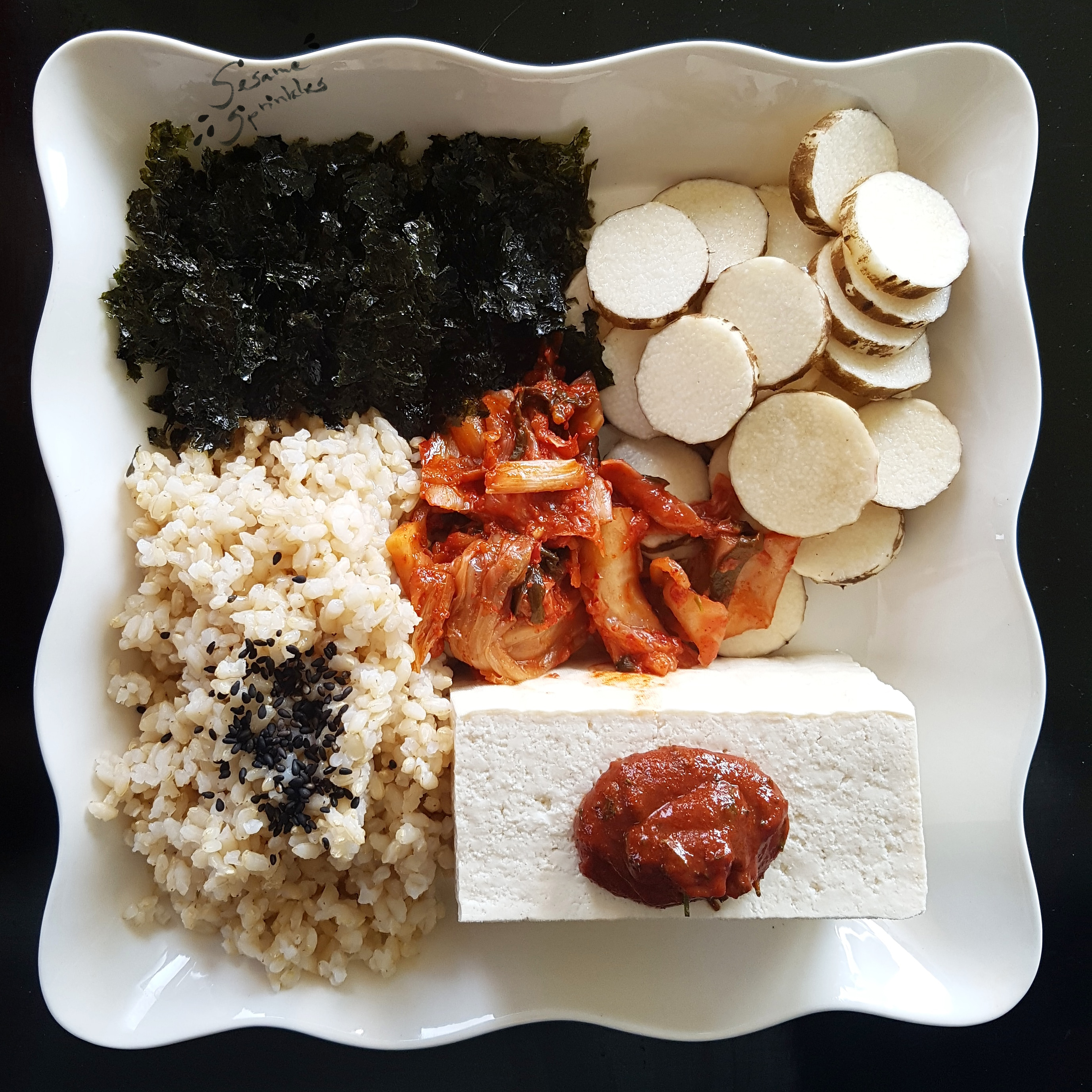Communication is an important tool in life. 🗣️ Particularly for vegans, vegetarians or other people with dietary restrictions. If you travel to Korea, you cannot expect people to understand English or other foreign languages. 🚫🇬🇧🇺🇸🇦🇺 A small portion of Koreans understands English, but those are mostly young people. The average restaurant staff or part-time jobber... Continue Reading →
What the name on the food label says
When doing grocery shopping in Korea, did you ever wonder why the "names" for food on the price tag are sometimes rather long? 🤔 You may also notice that some names deviate from what's on these lists: Korean names for vegetables, fruits, nuts, seaweed, mushrooms, cereals and beans. If you find that confusing, you can... Continue Reading →
Guide to reading Korean letters – Hangeul 한글
So you want to learn Korean? But you don't know where to start? How about starting with the basics: Learn the Korean alphabet, which is called hangeul (한글). In 2020, there was a daily online class about the Korean alphabet on Instagram (part 1, part 2 and part 3). Since it was quite popular, I... Continue Reading →
Learning Korean: Update on language-related posts
It can't be stressed often enough how important language is. In general and in particular. If you are concerned about food, for instance, knowing at least how to read Korean makes you more independent from electronic, internet-based devices (e.g. unreliable translation apps, asking friends or random people on Facebook for help). At the same time,... Continue Reading →
Essential seasonings and spices in Korean
What makes food taste good? Beside quality and handling of the main ingredients, seasonings and spices are key to making food more flavorful. In general, they can increase the taste 👅, add new aromas 👃 and also change the visual appearance of the dish. 👀 If food is not seasoned well, it is considered "bland"... Continue Reading →
Compilation of mushrooms and seaweed in Korean
By now, we have touched upon the vast diversity of plant-based foods like vegetables, fruit, grains and nuts. 🗒🌱 You may have learned enough Korean to identify the most common animal-based ingredients as well. 🗒🐮 So what's left? Well, a LOT! 😉 For example, there are hundreds of fungi and many kinds of seaweed (aka... Continue Reading →
The most extensive list of vegetables in Korean
You may know already how to read and spell animal-based ingredients in Korean, so how about studying plant-based foods now? Here's essential Korean vocabulary regarding vegetables! 👇 [Don't like veggies?! 😱 IMPOSSIBLE! But how about fruits? Or cereals, beans, mushrooms, seaweed, nuts or seasonings?] Btw, if you don't know how to read Korean yet, here's... Continue Reading →
The most common animal-based ingredients in Korean
Below vocabulary list provides the names of common animal-based food ingredients in Korean language. 🗒🐮🇰🇷🇰🇵 Advertisement at a traditional Korean market in Seoul 2019. What's on sale? Hopefully it helps when checking the ingredient list on food labels 📝, while generally studying Korean 📚, with identifying unknown foods 🔍 or in communicating what you want... Continue Reading →
Names of common allergens in Korean
Here is a compilation of sources of food allergens, which provides their Korean names as well as their most common spelling on Korean food labels. It is sorted by type of allergen and its origin in food - rather than being in alphabetical order. In addition to that, it distinguishes between animal-based and 🌱plant-based foods,... Continue Reading →
Tips on how to understand Korean food labels
Trust me, I know... Learning a language can be hard, it can take a lot of time and effort to master it. And it requires constant training to keep your language skills polished. At first, a foreign language may seem like a barrier. A typical food label in Korean contains a lot of information, but... Continue Reading →
















